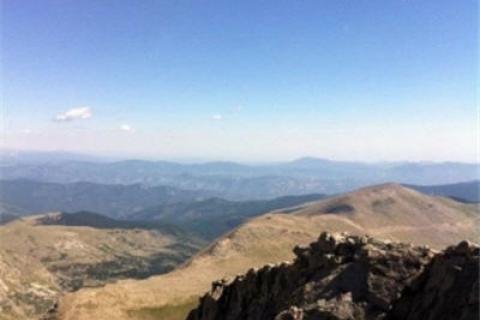
Climbing a 14’er is – no doubt – on your bucket list. Some of the most beautiful landscapes are at high altitudes, and there is nothing quite as rewarding as the majestic mountain views from on top of the world. But it takes more than the right hiking gear, sheer will and determination to get to the top. Before you cross this one off the list, let’s talk about how to prepare yourself for the risks of altitude sickness.

Hiking above 8,000 feet poses different challenges than it does at lower-altitude hikes. The decreased oxygen levels you encounter on your trek cause the body to work less efficiently. Preparing yourself to hike in high altitudes is critical for your safety, because no one is immune – not even the most experienced hikers – to altitude sickness or acute mountain sickness (AMS). Some common symptoms of AMS are disorientation, loss of coordination, headache, nausea and fainting. Here are some tips to make your trek to the summit as safe as possible:
1. Pace yourself when climbing
The biggest mistake you can make when climbing at high altitudes is to overexert yourself. It’s not a competition. Listen to your body and slow down if you are feeling fatigued or dizzy.
2. Breathe slowly at her altitudes
Your body’s ability to deliver oxygen to your muscles is greatly reduced at peak elevations. Take deep, focused breaths to help compensate for the diminished oxygen at higher altitudes.
3. Stay hydrated
The air is much dryer at high elevations and water evaporates faster when the air pressure is lower, so drink lots of water to prevent dehydration.
4. Dress in layers
The weather can fluctuate greatly as you ascend, so don’t use sea-level temperatures to gauge how you should dress for your hike. You’re better off shedding some layers of warmth than getting stuck in the blistering wind in a pair of shorts and a T-shirt.
5. Wear sunscreen
Don’t let the cooler temperatures and gusty winds fool you. Your skin needs to be protected, because the sun’s rays are much stronger at high altitudes.
- 4485 views

